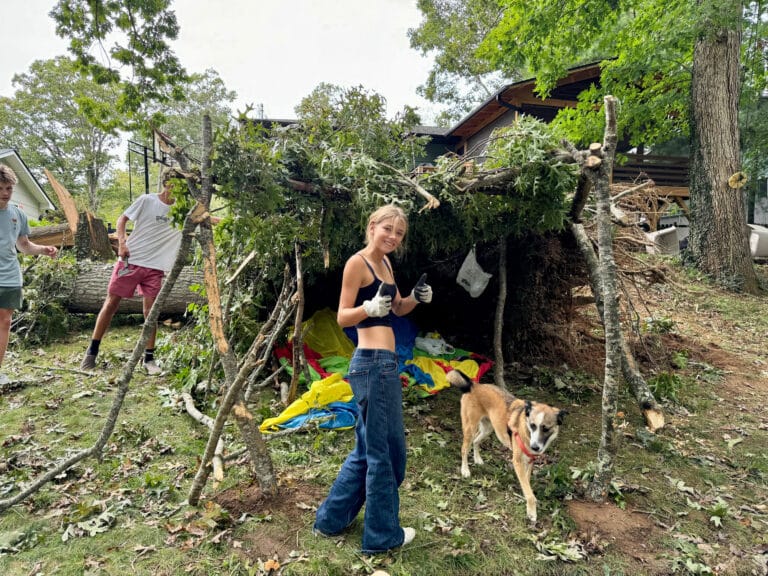 Logging Planned for Beloved Outdoor Oasis in Pisgah
Logging Planned for Beloved Outdoor Oasis in Pisgah
Beneath red sourwood leaves splashed against a blue fall sky, the Trace Ridge Trail stretches along a ridgeline of Pisgah National Forest.
“It’s the worst I’ve ever seen it,” says mountain biker Barry Cosgrove.
Trail conditions are only likely to get worse if a major logging operation is approved for the area. Trace Ridge and surrounding trails above the Mills River’s North Fork have been a recreation playground for decades. However, the Forest Service recently proposed 484 acres of logging in the heart of the forest, which is nestled between Asheville, Hendersonville, and Brevard, N.C.
The Southeast Off-Road Bicycle Association (SORBA) has built a good relationship with the Pisgah Ranger District through its volunteer trail work, and wants to keep things positive. SORBA members say they are not necessarily opposed to logging, but want to make sure it is done in ways that protects the trails, streams, and views that draw thousands of visitors to this area. Other outdoor and environmental organizations oppose the logging proposal because it targets a popular recreation area close to Asheville.
“Why log a forest in the heart of the most popular recreation spot in western North Carolina?” says Emily Diznoff, a member of the organization Wild South.
About 40 people attended a June public comment meeting on the proposal, says Michael Hutchins, coordinator for Pisgah National Forest. This fall, the Forest Service plans to issue an environmental assessment with a range of alternatives, including one that Pisgah District Ranger Randall Burgess will identify as preferred. The Forest Service will then seek a second round of public comments before deciding how to proceed. Groups and individuals must comment to be eligible to appeal any plan.
Among the 103 comments submitted over the summer, most people said that any logging needs to be done in a way that protects the area’s values for recreation, wildlife, scenery and water quality. For instance, the City of Hendersonville asked the Forest Service not to do anything that would cause more erosion into streams that feed the reservoir.
The larger question is whether Mills River should be managed mainly for recreation instead of timber. That will be addressed when the overall forest plan is revised in a few years, says Hutchins. In the meantime, the Forest Service “heard loud and clear” that recreational users want North Mills River area’s recreational values protected.
North Mills River Logging Plan
What: 484 acres of commercial timber harvesting spread over 7,443 acres of Pisgah National Forest. Another 1,412 acres are slated for “non-commercial treatments” with herbicides and hand tools to promote oak and hickory, species deemed “desirable” for wildlife and timber. The plan also calls for building 1.1 miles of new roads, 1 mile of temporary roads and upgrading 3 miles of “old woods” roads for logging. It would designate 231 acres as “small patch old growth habitat.”
Where: Hendersonville Watershed north and west of North Mills River Campground.
When: Logging could begin in 2011 and take place over three years.
What’s next? Pisgah National Forest will issue a range of alternatives and accept more public comments later this fall. Information will be posted at: http://www.cs.unca.edu/nfsnc






